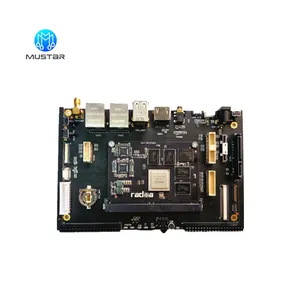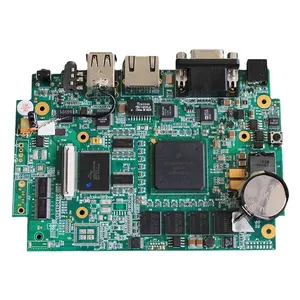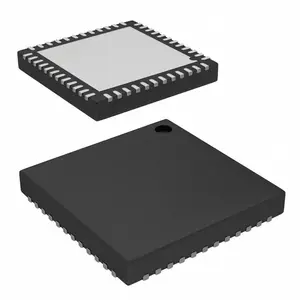Introduction to ARM Motherboards
ARM motherboards are a pivotal component in modern computing, serving as the backbone for many types of electronic devices. These motherboards utilize ARM (Advanced RISC Machine) processors, known for their efficient power consumption and performance in processing tasks. They are widely used in various applications, from personal computing devices to complex industrial systems.
Types and Sizes of ARM Motherboards
The ARM motherboard comes in several sizes, catering to different needs and spaces. The primary sizes include ATX, Micro ATX, and Mini ATX motherboards. The ATX motherboard is the standard size, offering a balance of space for features and expansion. In contrast, Micro ATX and Mini ATX motherboards are more compact, designed for smaller cases and typically used in systems where space is at a premium. While these smaller boards may have fewer PCIe and RAM slots, they still maintain the core functionality needed for a wide range of applications.
Features and Applications
ARM motherboards are versatile, supporting various applications from everyday computing to specialized industrial tasks. They often come equipped with essential ports and features, such as built-in WiFi capabilities and high-speed Thunderbolt 3 ports, facilitating data transfer speeds that can reach up to 40 Gbps. The application of these motherboards spans across sectors, including but not limited to, personal computing, gaming, and embedded systems.
Choosing the Right ARM Motherboard
Selecting the appropriate ARM motherboard requires consideration of several factors. The number of expansion slots, RAM slots, and onboard features must align with the intended use. For instance, a motherboard for gaming might need more expansion slots to accommodate graphics cards and additional RAM for optimal performance. Conversely, a motherboard for a dedicated server may prioritize network connectivity and stability. It is crucial to assess the motherboard's specifications to ensure compatibility and meet the user's requirements.
Materials and Advantages
ARM motherboards are constructed from a variety of materials, each chosen for its durability and electrical properties. The use of quality components ensures reliability and longevity. The advantage of using an ARM motherboard lies in its architecture, which is designed to deliver efficient performance while minimizing power consumption, making it an ideal choice for energy-conscious operations.
Starting Your ARM Motherboard Selection
With the comprehensive information provided by sellers on Alibaba.com, buyers can make informed decisions to select the ideal ARM motherboard that meets their specific needs. Whether for upgrading a personal computer or integrating into a larger system, the right motherboard is just a few clicks away. Explore the listings to find a suitable motherboard that aligns with your project requirements.











































 浙公网安备 33010002000092号
浙公网安备 33010002000092号 浙B2-20120091-4
浙B2-20120091-4